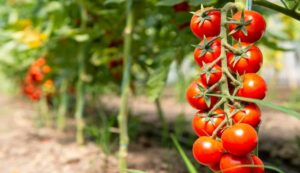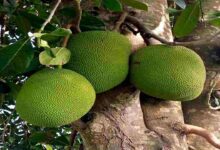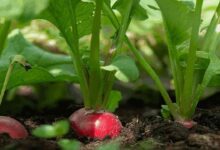Prepare tomato nursery with this easy method, diseases and pests will stay away
Prepare Tomato Nursery: All over the nation, effective tomato farming is practiced. In Uttar Pradesh and Bihar, the winter months are ideal for tomatoes. Frost is the main issue with tomatoes in the winter. Tomatoes grow best at temperatures between 20 and 28 degrees Celsius. Tomatoes produce their red color best between 20 and 25 degrees Celsius, which is why winter tomato fruits are delicious and dark red. A temperature over 40 degrees Celsius causes immature fruits and flowers to fall. Sandy loam soil that has enough organic matter available and enough drainage.

Improved Varieties of Tomatoes
There are several tomato types when discussing improved tomato varieties. Such as ARTH 3, ARTH 4, Avinash 2, BSS 90, Co. 3, HS 101, HM 102, HS 110, Selection 12 and so on. Hisar Anmol (H 24), Hisar Arun (Selection 7), Hisar Lalima (Selection 8), Hisar Lalit (NT 8) Krishna, KS 2, Matari, M.T.H 6), NA 601, Naveen, Pusa 120, Punjab Chuhara (EC 55055 X Punjab Tropic), Pant Bahar, Pusa Divya, Pusa Gaurav, Pusa Hybrid 1, Pusa Hybrid 2, Pusa Hybrid 4, Pusa Ruby, Pusa Sheetal, Pusa Uphaar, Rajni, Rashmi, Ratna, Roma, and Rupali, etc.
Number of Seeds and Planting
It takes around 300–400 grams of seed to create a one-hectare nursery for crop growth. 150–200 grams of seed per hectare are enough for hybrid types. To cultivate winter tomatoes, or Tamatar ki kheti, nursery stock must be raised between September and October. Prevent pre-seedling fungal attack by treating the seeds with a mixed fungicide consisting of Thiram, Metalaxyl, and Mancozeb before planting.
To propagate in a nursery, construct 1X3-meter raised beds and treat them with formaldehyde or a combination of carbofuran at a rate of 30 grams per square meter. Apply one kilogram of carbendazim or trichoderma per kilogram of seed, then plant the seeds in rows, spacing them 5 cm apart. Once the seeds have been sown, pour water from the fountain over them and cover them with fine soil or well-rotted cow dung manure. Dithane M-45/Metalaxyl+ Mancozeb combination fungicide should be sprayed every 8–10 days after the seedlings sprout. Prior to planting 25–30-day-old seedlings in the field, treat the plant roots by soaking them for 20–25 minutes in a solution of 1.5 grams of carbendazim or 10 grams of Trichoderma per liter of water. Plant the plants 60 centimeters apart, leaving 75 centimeters between rows on the field.
Plant marigold around the ridges if at all feasible, since this will significantly lessen tomato pest invasion. Twenty to twenty-five tons of well-rotted cow dung manure, 150 kg nitrogen, 75 kg phosphorus, and 75 kg potash are needed for tomato growing. If the soil lacks boron, 0.3% borax spraying will increase fruit yield. Apply light watering every ten to fifteen days throughout the winter. Drip irrigation is the best method of irrigation, if it is feasible.
Tomato plants need to be given soil and assistance throughout their blossoming period. Tomato cultivars that grow taller need more assistance. The fruits do not come into contact with dirt or water since the plants are supported, hence fruit rotting is prevented. After the plants have been transplanted for 30 to 45 days, holes are drilled in bamboo or wooden sticks at various heights, wires are linked to the holes, and strings are used to bind the plants to the wires. We refer to this procedure as staking. The crops should be weeded as needed. During the blooming and fruit-forming stages, weeding should not be done.
Harvest the fruits as soon as they begin to develop a light red color. Grade the fruits and remove the small-sized, contaminated, and insect- and disease-infested fruits. The fruits that have been evaluated are placed in plastic crates and sent to any market or the closest vegetable market. Tomato yields range from 400–500 quintals/ha on average, whereas hybrid tomato yields may reach 700–800 quintals/ha.

